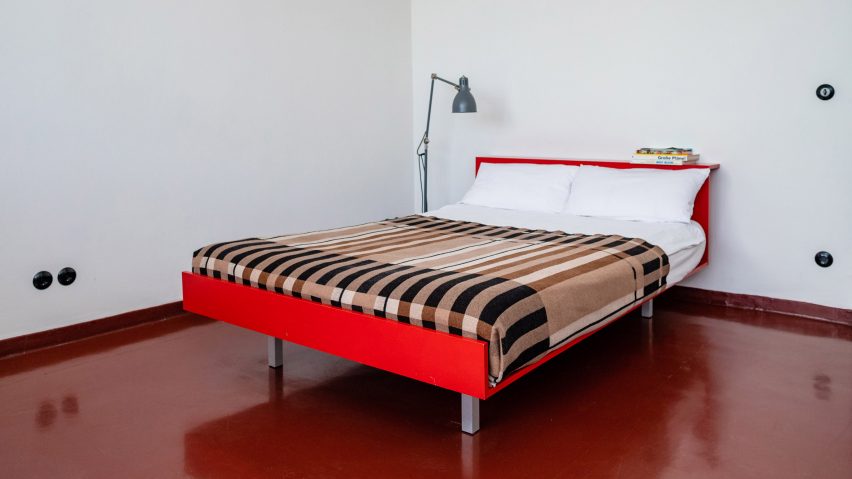London design studio Wallace Sewell will reissue the blanket originally designed by the Bauhaus's head of weaving Gunta Stölzl for its Dessau dormitories.
The Prellerhaus blanket – named after the dormitories at the Bauhaus's Dessau campus – has been recreated by the London textile design studio in its original palette and two new colourways.
Originally woven by Gunta Stölzl in 1926, whilst head of the Bauhaus weaving workshop, the graphic blanket is typical of the school's modernist style.
More than 100 blankets were handwoven by students in the workshop but all of these have subsequently been lost.
Wallace Sewell was commissioned by Jörg Klambt, founder of Designshop Bauhaus Dessau, to recreate the blanket for the Bauhaus anniversary year, in collaboration with Stölzl's daughter Monica Stadler.
The blankets will be on the dormitory beds when the Bauhaus Dessau building reopens in September.
"This blanket captures the essence of my mother's design. It will add warmth to the studios in the Bauhaus and make the historic photograph of the Prellerhaus dormitory come alive again," said Monica Stadler.
Together they used archival drawings, swatches and photographs, as well as a copy of the blanket produced for an exhibition in 1996, to recreate the original design.
This research helped the designers to "better understand her design processes".
Whilst the original blanket was woven in rayon, which was a popular material at the time, the designers have chosen to make the updated version in wool, which they describe as more desirable and sustainable.
Wallace Sewell initially produced sketches, then created colour swatches that were transferred on to hand looms in their London studio, before weaving full-scale fabric on looms in Lancashire, England.
This fabric is washed and then milled – a process of controlled felting – before being "shaved" at a finishers in Yorkshire. Once complete, the fabric is processed into hand-finished blankets at the Lancashire mill.
"Harriet Wallace-Jones and Emma Sewell are both artists who combine an outstanding understanding of colour with a deep technical knowledge of all aspects of weaving. Their clear artistic vision gives them the freedom to experiment with colours and materials without ever becoming arbitrary," said Klambt.
"It is precisely this quality – a desire to experiment, based on a strong creative foundation – that links their work to the legacy of the Bauhaus."
The anniversary of the foundation of the Bauhaus design school in 1919 is being marked in myriad ways.
A 15-square-metre mobile recreation of the Bauhaus building in Dessau is currently on a 10-month world tour, playing host to a series of symposiums and workshops that attempt to challenge colonial attitudes towards modernity.
We also published a feature series on Dezeen looking at the key figures and projects.

